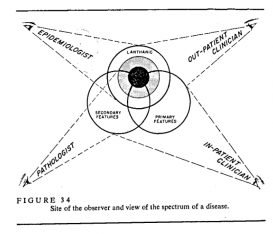The standard historical narrative is that before the introduction of the clinical trial beginning in the 1940s, it was primarily in public health that medical research had enthusiastically adopted quantitative methods in the generation of vital statistics about the hygiene, mortality, nutrition, and poverty of populations. With regards to evaluating therapy, clinicians were resistant in the nineteenth century to the influence of “academic” ideas (Porter, 1996). With the work of a set of British statisticians in the late 1940s and 1950s, statistical methods gained a foothold in the world of medical therapeutics resulting in a paradigmatic shift in medical objectivity—not because doctors finally embraced “academic” trends, but because the state increasingly sought to regulate medical decision-making (Matthews, 1995). By the mid-twentieth century, statistics had developed into what Ian Hacking has called a “technology of intersubjectivity” in which statistical procedures were increasingly used as measures essential to legitimation, publication, and authority in scientific research (Hacking, 1992). The use of statistical methods in clinical research and practice gained an unprecedented epistemological dominance with the entry of computers into laboratories and clinics in the 1960s, the increasingly wide arsenal of medical technologies, and the scaling up of clinical research in the form of large RCTs. In the post-1945 period, primarily Anglo-American clinical scientists argued for a new vision of clinical science as clinical epidemiology grounded in statistical and numerical literacy (Feinstein, 1967). The professional success in the 1990s of “evidence-based medicine” in translating this vision into a continuous system of medical education has by and large cemented the mid-century shift in medical objectivity. Statistical inference has become an unavoidable touchstone for all claims to valid knowledge in the biomedical sciences. Against the backdrop of this sea-change in medical thinking and practice, the complex history of how these methods have been developed, deployed, interpreted, misused, and repurposed within medicine has yet to be written. This working group serves as a starting point for a historical and political epistemology of medical statistics.

Statistical thinking in medicine visualized. Feinstein, Alvan. Clinical Judgement. Baltimore: Williams & Wilkins, 1967, 216.
Working Group
